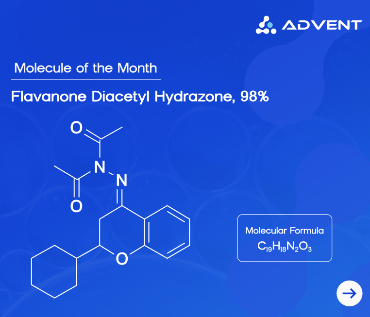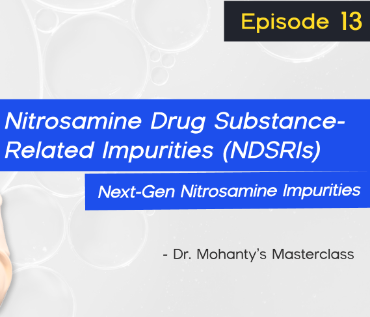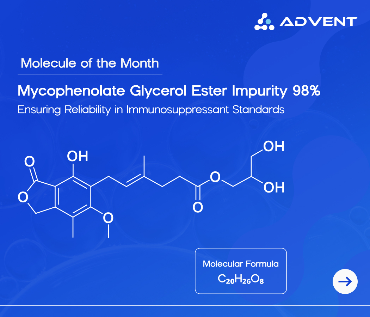When the student is ready, the teacher arrives!
Such is the story of this blog…
Today, with the rise in the demand for solar cells and semiconductors, the solvents and specialty chemicals used to manufacture them play a key role. Any impurity in these solvents and chemicals can lead to circuit failure. In Episode 7, Dr. Mohanty explains the fundamental, yet often overlooked, topics that empower our high-tech future. In this blog, we highlight the key points to remember when choosing solvents and specialty chemicals.
Why does purity matter?
Semiconductors form the backbone of modern devices. Right from launching a new smartphone model in the market to launching a spacecraft in the galaxy, they depend on this material.
While manufacturing semiconductors, the hygiene levels similar to those in the pharma industry must be maintained. Even trace levels of impurities, as small as parts per billion, can result in the system’s failure. For instance, in the solar cell industry, contamination like dust or dirt can also reduce efficiency and the panel's lifespan.
With a growing demand for renewable energy all over the world, it is crucial to maintain high purity for not just long-lasting performance, but also for our sustainable future.
And the solution to maintain purity lies in the solvents and specialty chemicals used in their manufacturing processes!
Types of Solvents Used in Semiconductor Manufacturing
Dr. Mohanty explains how various solvents are used to manufacture semiconductors throughout the following steps:
Cleaning wafers: Isopropyl alcohol (IPA) is used to remove microscopic contaminants, while Ethanol and Methanol are used for surface cleaning.
Photolithography: Solvents such as N-Methyl-2-pyrrolidone (NMP) are used to apply and strip photoresist materials for etching.
Etching & Stripping: Solvents are used to remove layers of Silicon dioxide and metals.
Drying & Rinsing: Solvents are used to eliminate residual moisture and prevent defects.
Adhesive Removal: Solvents are used for post-processing and packaging.
Acetone, a highly versatile solvent, is used during various stages, like cleaning, drying, and photomask stripping, whereas Tetrahydrofuran is used explicitly for polymer-based applications only. Solvents with high boiling points, like Dimethyl Sulfoxide (DMSO) and Dimethylformamide (DMF), are used to process organic materials. For applying coatings and thin films, xylene, toluene, and butyl acetate are commonly used.
The type of solvent to choose depends on the purpose, the end-use material, and the impurity tolerance.
Types of Solvents Used in Solar Cell Fabrication
Similar to using solvents in the semiconductor industry, solvents play a critical role in the solar cell production in several ways. They are used to clean the silicon wafer to maintain defect-free surfaces and to etch the surfaces to obtain the desired textures. A solvent in solar cell production is also used to dissolve the chemicals for the process of doping. They create uniform solutions, allowing their precise application and even film formation. Solvents ensure controlled dopant concentration and quick evaporation. Apart from this, they are also used to coat anti-reflective and conductive layers on the solar cells.
Therefore, their purity and chemical compatibility are essential to maintain the performance and reliability.
Some of the commonly used solvents are:
IPA and Acetone are used for surface cleaning, DMF is used for doping and perovskite precursor solutions, and DMSO and Gamma-Butyrolactone (GBL) are used to enhance the stability of the perovskite film. Cyclohexanone is used to formulate solar cell inks, ethyl acetate and toluene for interface engineering and film formation respectively. Chlorobenzene is a solvent, used in the manufacturing of organic photovoltaic cells.
The growing interest in perovskite solar cells, made of hybrid lead or tin halides, has made the process more complex. Solvents such as DMF and GBL are specifically used to manufacture these cells as they can create uniform and stable films.
What are the main characteristics of semiconductor and solar-grade solvents?
As recommended by Dr. Mohanty, to maintain the optimal performance of the solvents and the devices, one must use solvents that strictly adhere to the stringent specifications, such as:
Ultra-high purity: the solvents must be free from contaminants to avoid any defects in the devices and the system.
Low-moisture content: A solvent must have a minimum amount of moisture content to avoid any incidents of damage due to oxidation.
High volatility: A highly volatile solvent ensures quick evaporation, resulting in clean surfaces.
Low Surface Tension: A solvent with low surface tension improves the wetting and cleaning efficiency.
Material Compatibility: The solvent chosen must not react adversely with the other substrates in the system.
Low Toxicity: When choosing a solvent, one must ensure that it is safe and has a minimum environmental impact.
In addition to the solvents, certain high-purity chemicals are necessary for etching, doping, cleaning, and other processes.
Summary of Applications of Specialty Chemicals
Hydrogen Peroxide and Ammonium hydroxide help clean silicon wafers
Hydrochloric acid and Nitric Acid are used for metal and oxide etching processes.
Phosphoric and Sulfuric acids are used in several cleaning and oxidation steps.
Sodium and Potassium hydroxide are used to texture silicon in solar cells.
Acetic acid is often used for aluminum etching.
The chemicals used in solar cell and semiconductor manufacturing must be highly pure. Only chemicals with impurity levels in ppt (parts per trillion) can be used.
For more information about solvents and chemicals used in solar cell and semiconductor manufacturing, watch Dr. Mohanty’s 7th episode on YouTube!
Advent’s Precision in High-Purity
At Advent, we proudly offer a robust portfolio of highly pure solvents and specialty chemicals for the semiconductor and solar cell industry. Solvents like IPA, acetone, methanol, THF, Butyl acetate, Chlorobenzene, DMSO, DMF, and NMP are available with more than 99.9% purity.
We produce chemicals, including hydrogen peroxide, ammonia, hydrochloric acid, hydrofluoric acid, nitric acid, phosphoric acid, sulfuric acid, sodium hydroxide, potassium hydroxide, and acetic acid, to meet the stringent standards of the industries.
For more information or to place an order, visit our website today!




